|
Genres, Themes, Actors, and Directors:
- Actors and Actresses
- Billy Wilder Films
- Flashback Films
- Jose Ferrer Films
- Michael York Films
- William Holden Films
Review:
Billy Wilder’s penultimate movie — co-written once again with his longtime collaborator, I.A.L. Diamond — was this gothic Hollywood tale set abroad in Europe and filled with flashbacks, mistaken identities, drug addiction, mother-daughter dynamics, and plenty of dubbing. The film evokes immediate parallels with Wilder’s Sunset Boulevard given the (re)casting of Holden, and the centrality of an aging diva holding reign over her household while her loyal servants wait nearby.
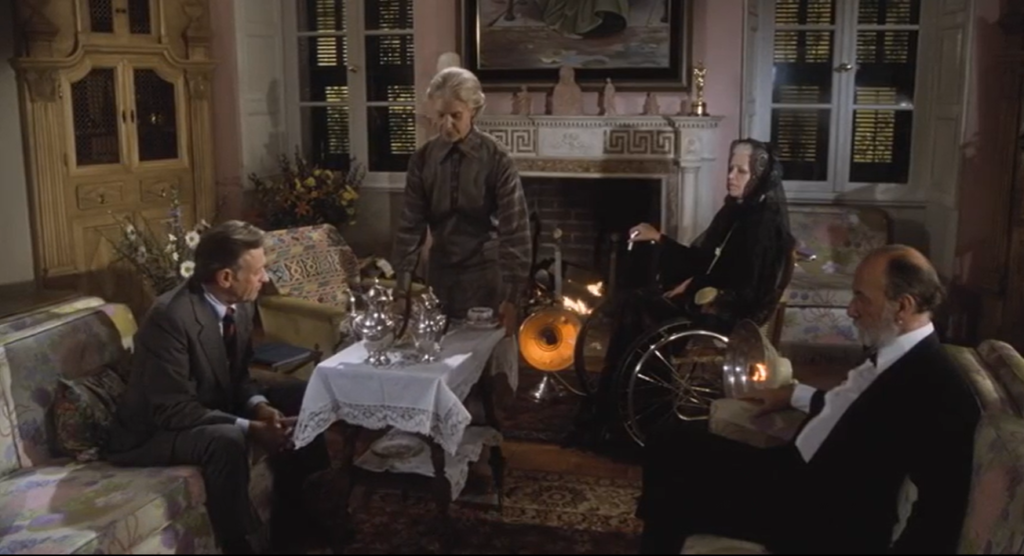
Quickly, however, the movie takes all sorts of unusual twists and turns, with many other movies (and big-name actors) referenced in some way; I’ll quote from DVD Savant’s review since he so succinctly names many of them:
Fedora seems to be taking a tour through all of Wilder’s work, and the work of others as well. It begins with a Hollywood insider who has a flashback at the funeral of a great star (The Barefoot Contessa).
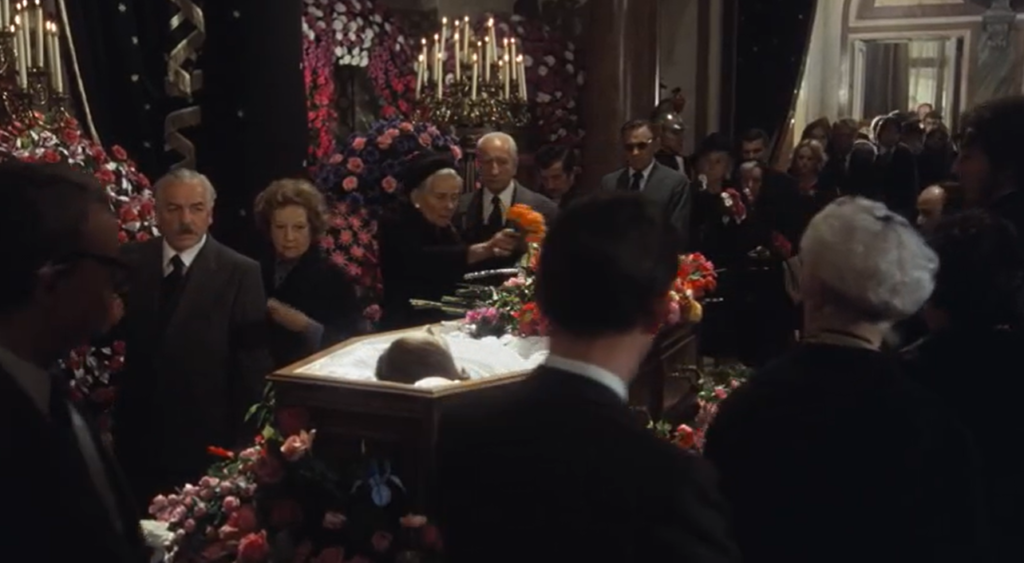
It then journeys to a romantic Mediterranean setting with an amusing hotelier (Avanti!).
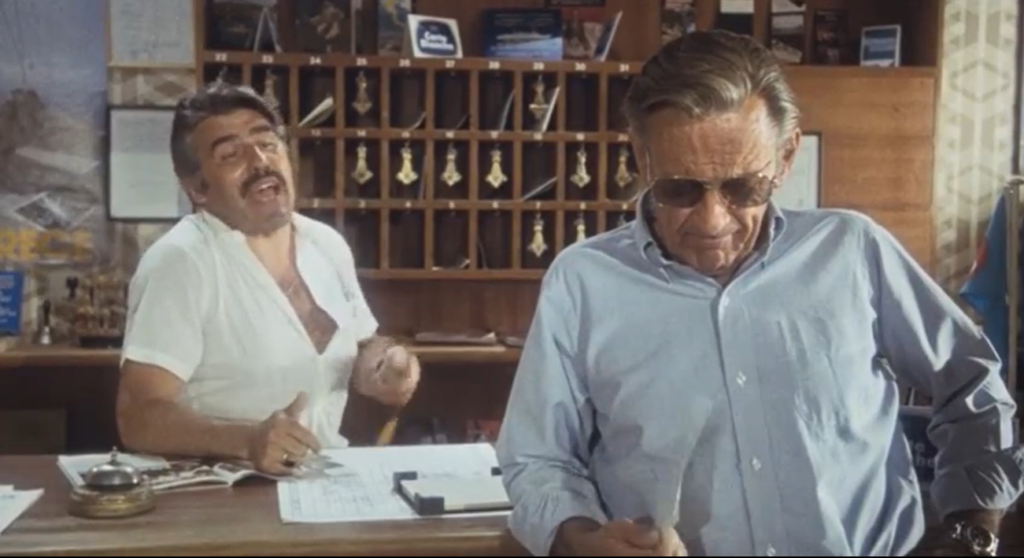
The idea of a perhaps-mad star undergoing radical plastic surgery seems a melding of Sunset Blvd. and Les yeux sans visage, with mirrors removed from the house…
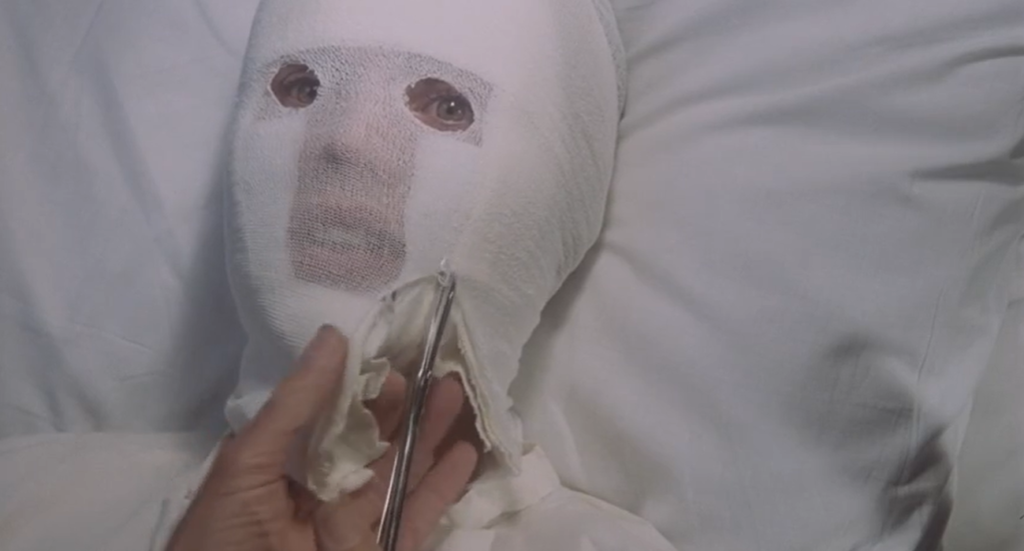
The ‘plastic surgery madness’ also evokes images and ideas about disfigurement from A Woman’s Face… Finally, a major make-over/identity transformation seems patterned after scenes in Vertigo and also the “Vertigo” pretender The Legend of Lylah Clare.
The inclusion of cameos by Henry Fonda and Michael York (playing themselves) simply adds to the surreality of what we’re watching: Fedora is a fictional movie star who nonetheless has a very-real crush on Michael York-the-actor:

… and who receives an honorary Oscar from Henry Fonda as “President of the Academy”.

One also can’t help thinking of Mommie Dearest (1981) at certain points (though that film and its influence wouldn’t appear until a few years later).
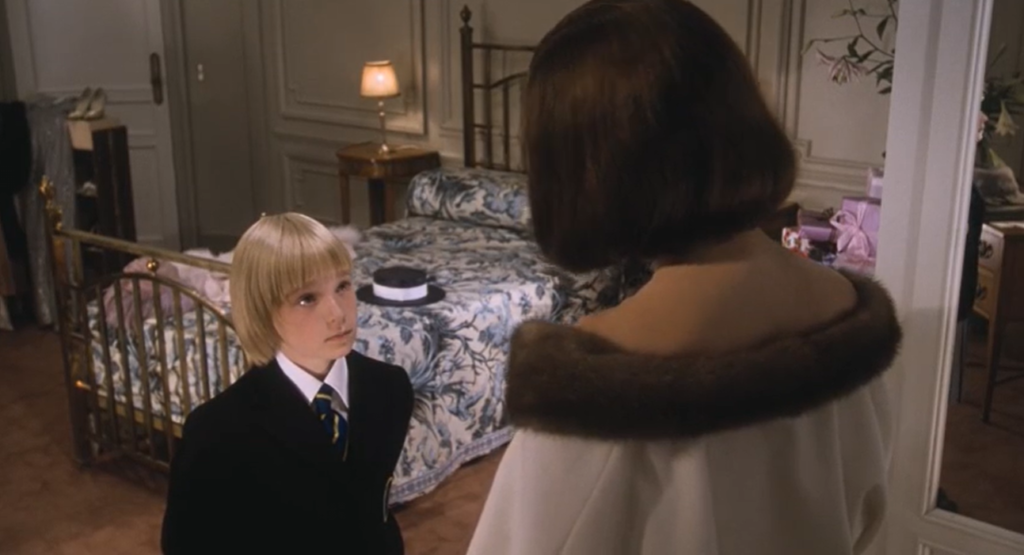
Indeed, it’s the mother-daughter element of the storyline that most directly turns it into an unexpectedly dark gothic horror flick; Wilder and Diamond don’t shy away from cynically representing the depths of life-altering narcissism at play in Hollywood. While Fedora isn’t a must-see entry in Wilder’s oeuvre, it will certainly be of interest to his fans, and remains well worth a look.
Notable Performances, Qualities, and Moments:
- A truly bizarre storyline
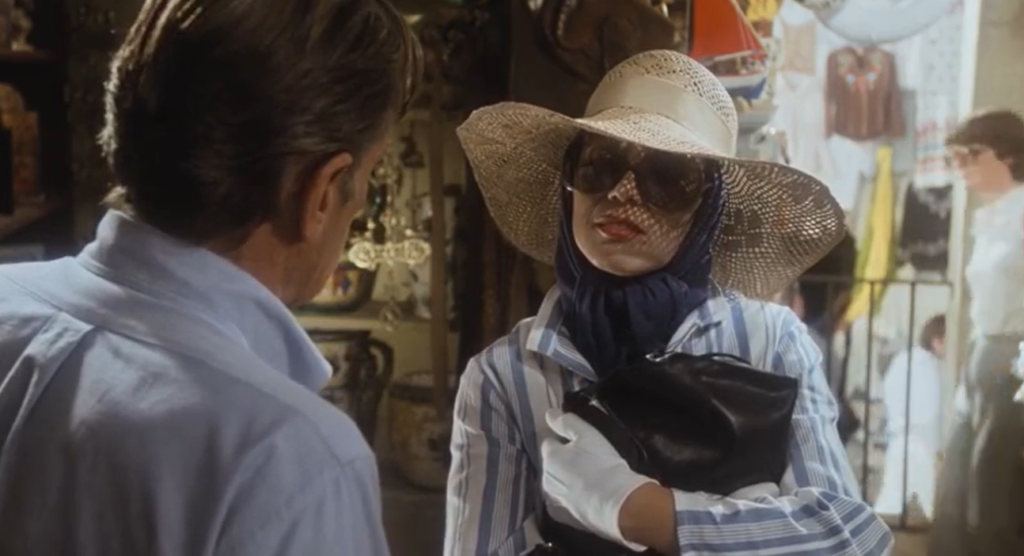
- Gerry Fisher’s cinematography
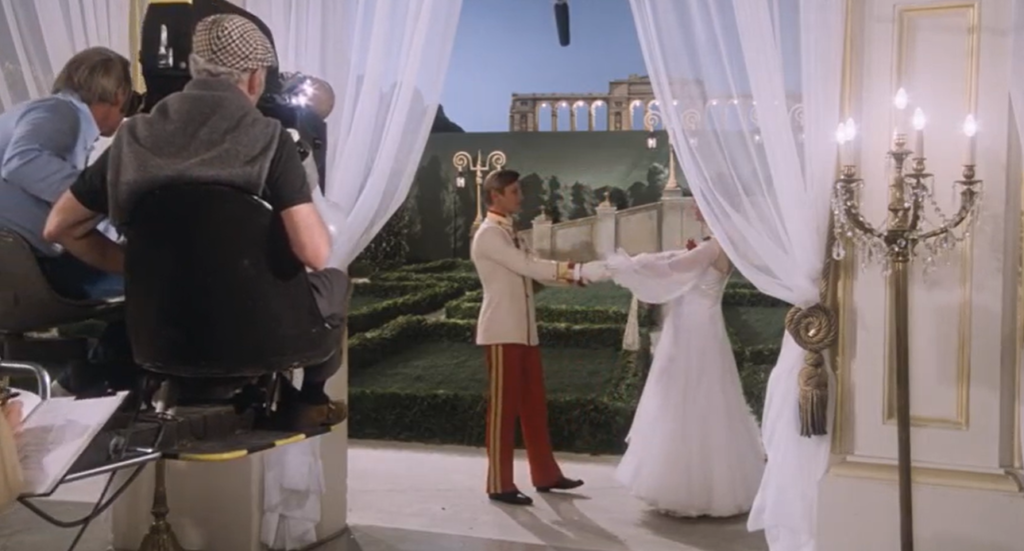
- Fine use of location shooting in Greece and France
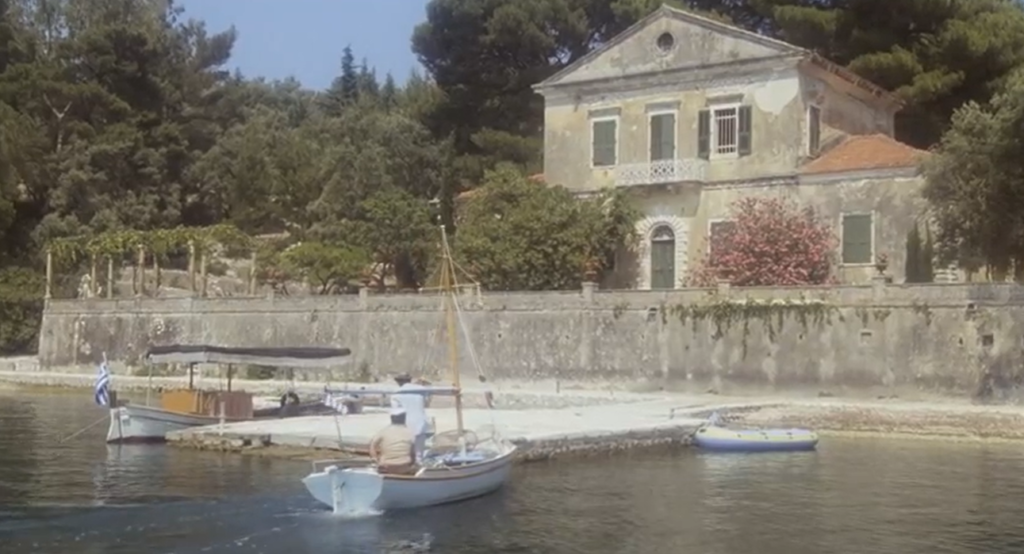
Must See?
No, but surprisingly enough, it’s recommended.
Links:
|
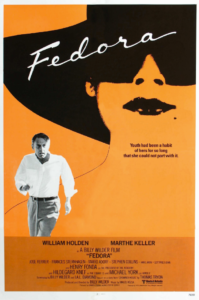










One thought on “Fedora (1978)”
Rewatch (11/20/21). Not must-see.
The good news is that it’s not as bad as most of Wilder’s latter-day flicks, esp. not the first half. The second half is a different matter.
Over the years, when I came across a review of ‘Fedora’, it was never a good one. Most people blamed Marthe Keller for being miscast. The fact of the matter is she’s not that bad, not that she’s particularly good.
The first half is reasonably compelling because its pacing is ok and the script (adapted from a Tom Tryon work which I haven’t read) isn’t as cringe-worthy as most of the films with which Wilder finished off his career. It’s watchable.
Then comes the second half – which is weirdly anti-climactic with its decision to consist of a kind of exposition in reverse. The suspense (of sorts) which had been building up is thrown out – along with any sense of drama. We more or less give up caring about what’s going on.
And things just drone on to the end.
The acting isn’t all that memorable – but it’s interesting seeing José Ferrer featured, as well as Mario Adorf and Fassbinder regular Gottfried John in smaller roles.